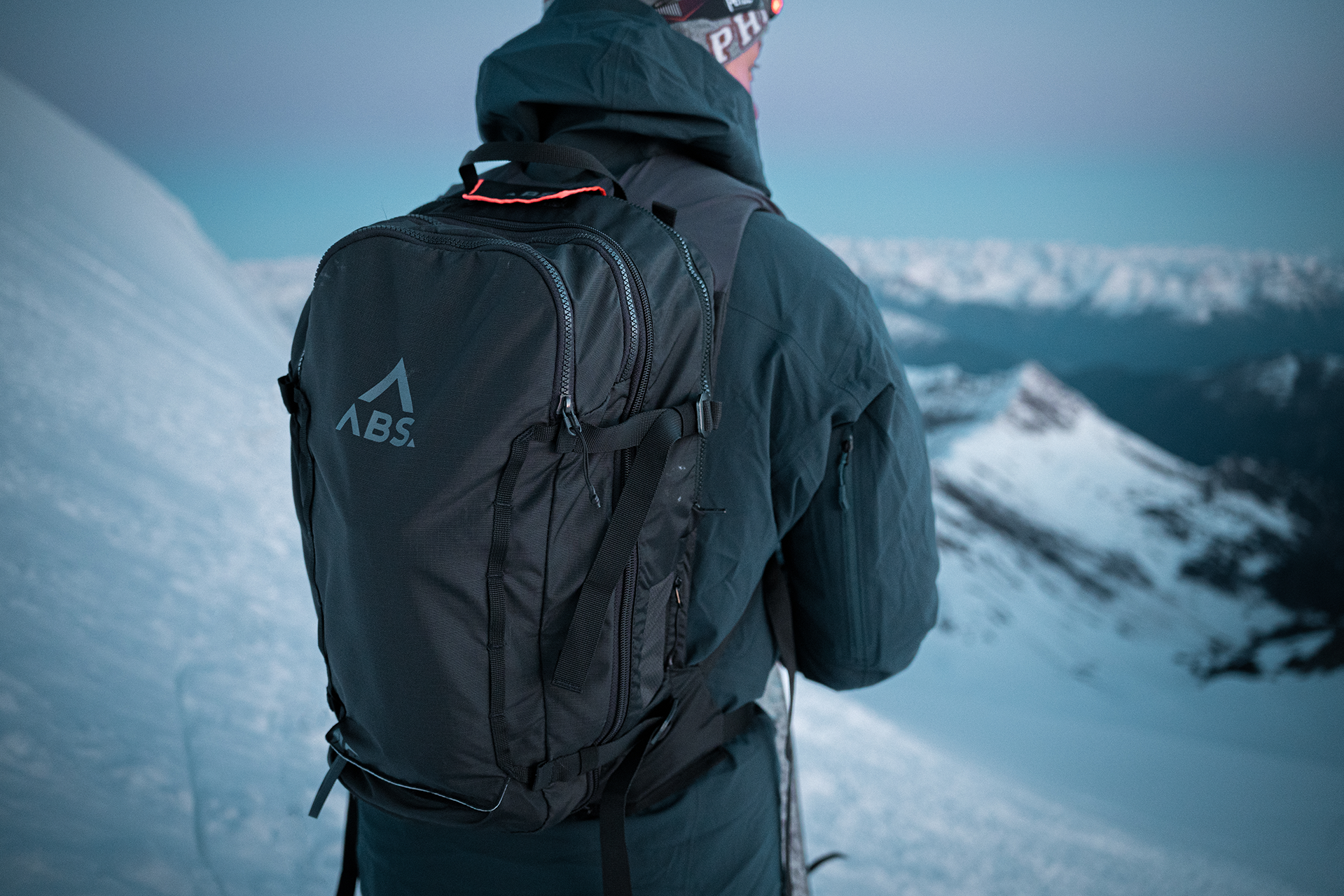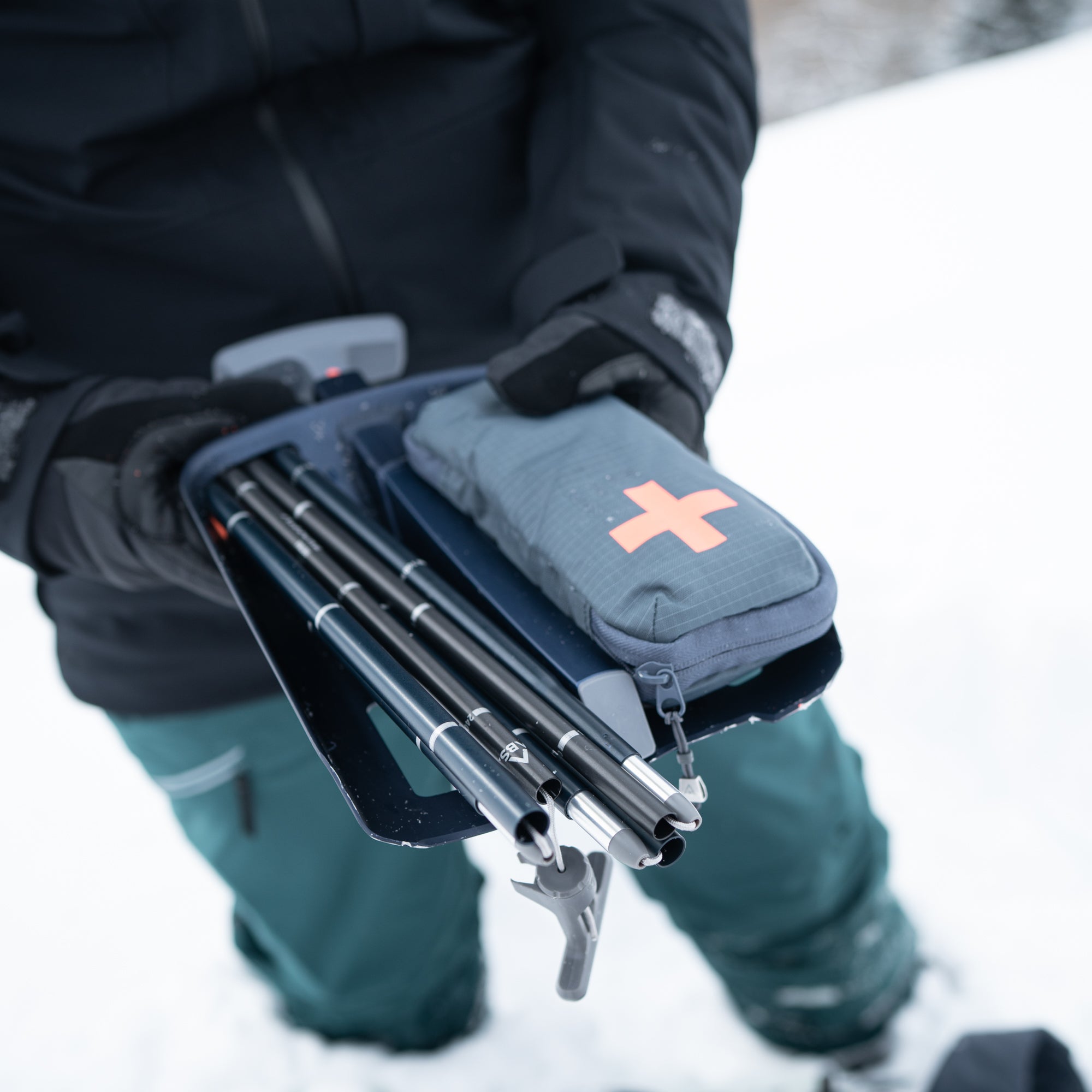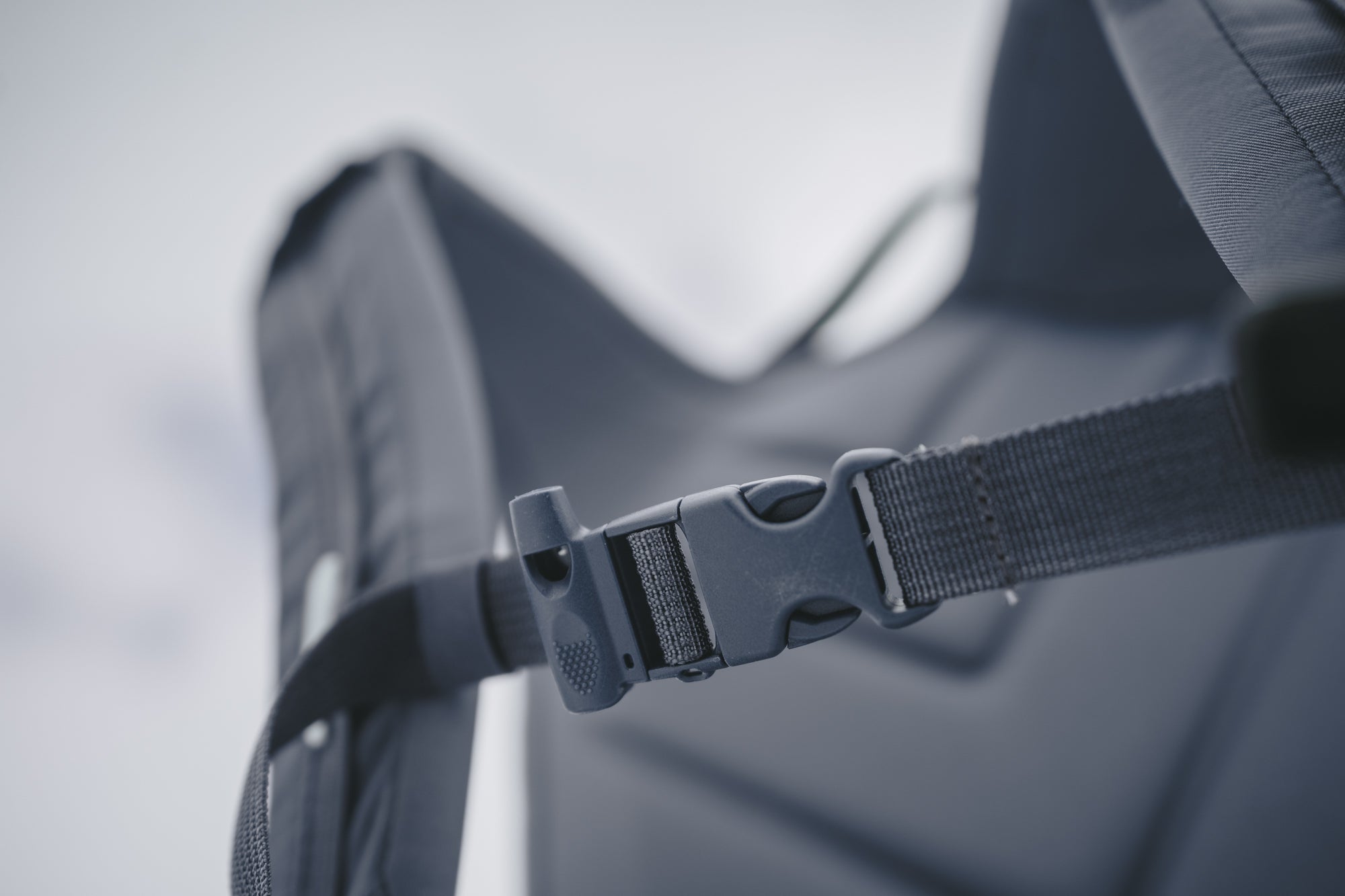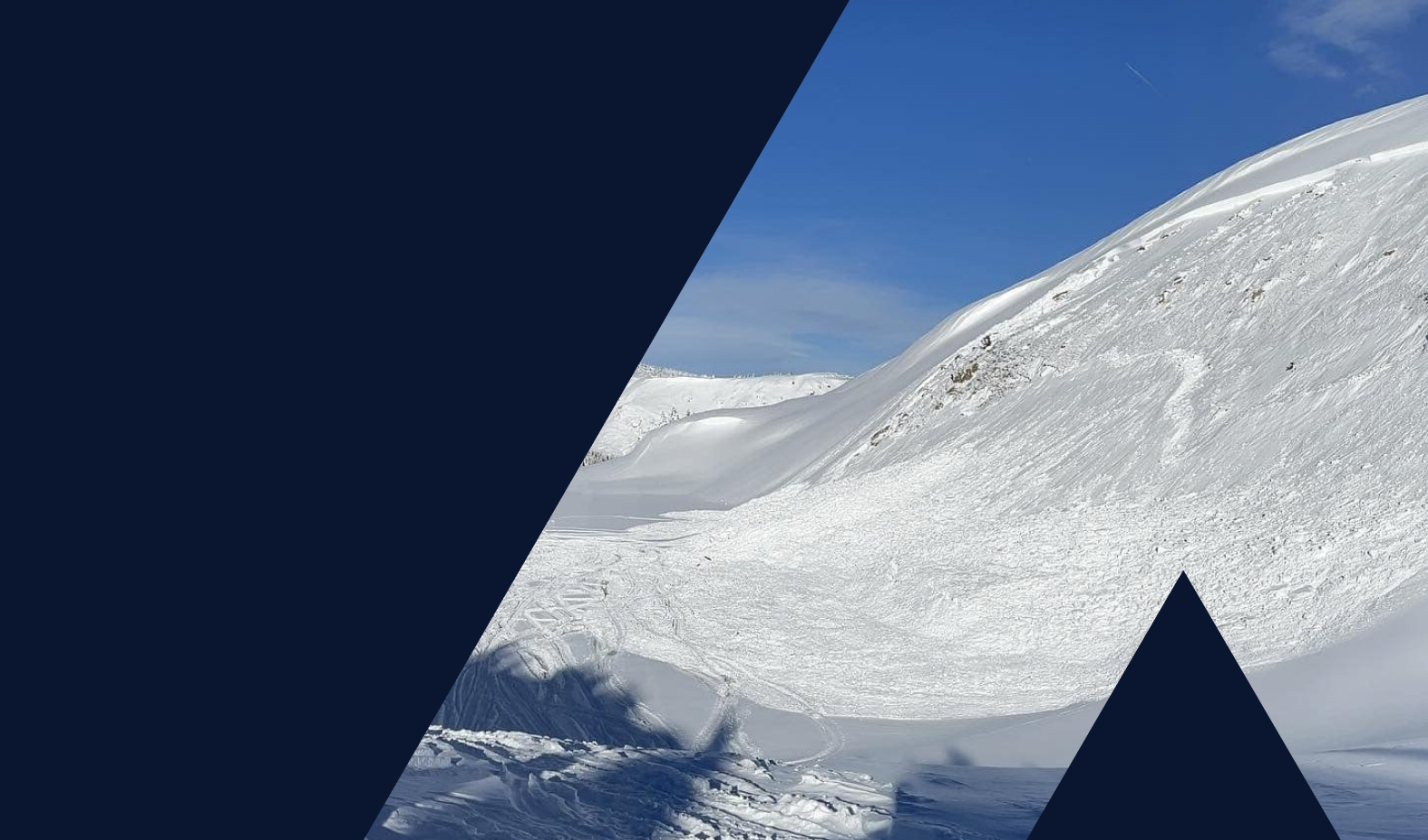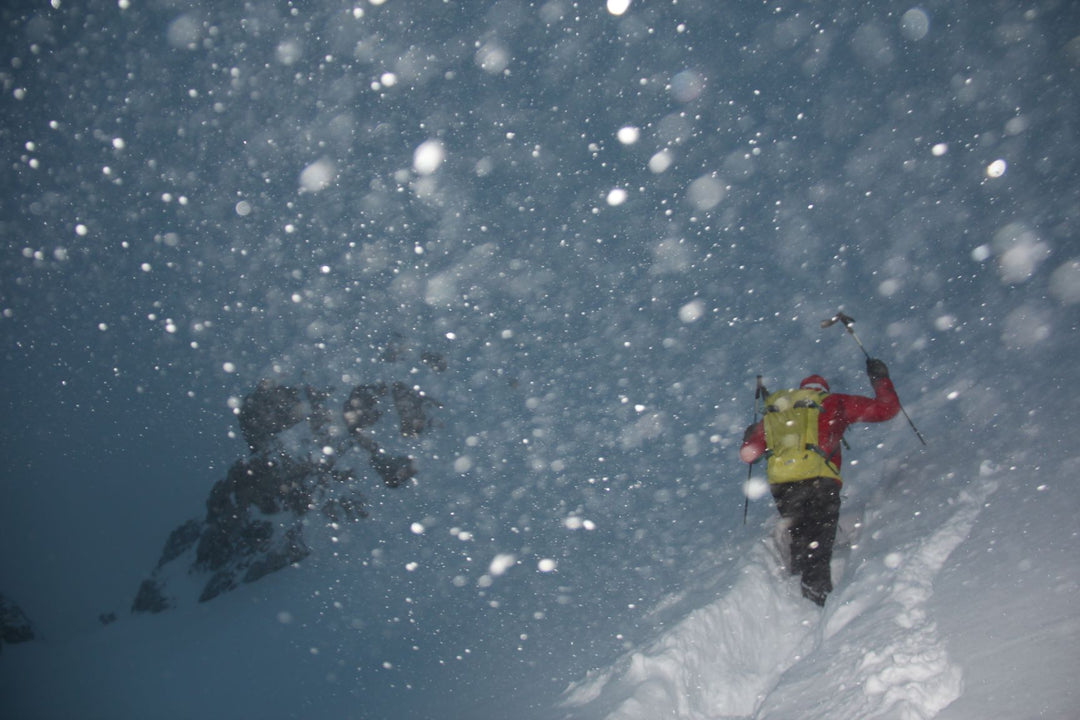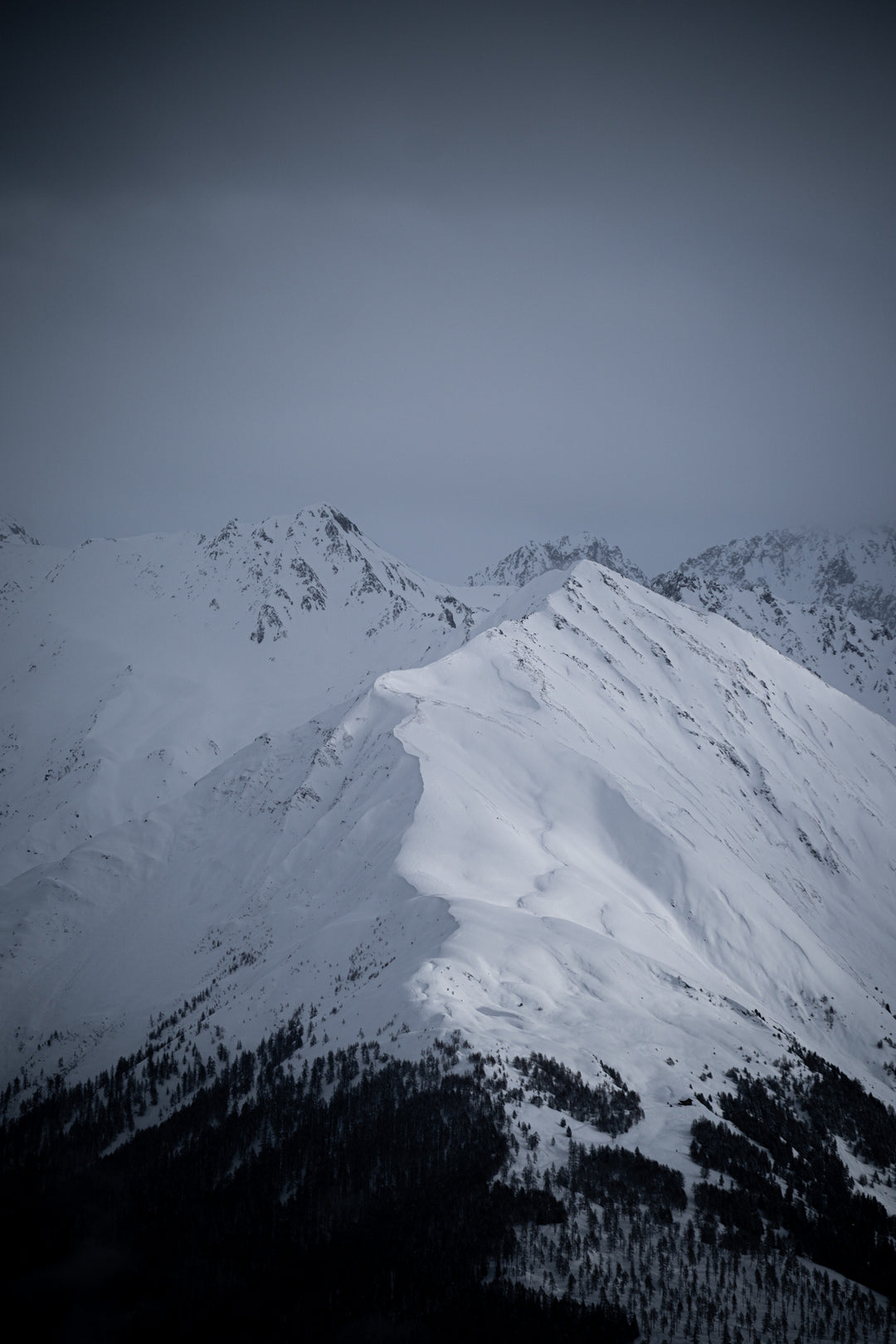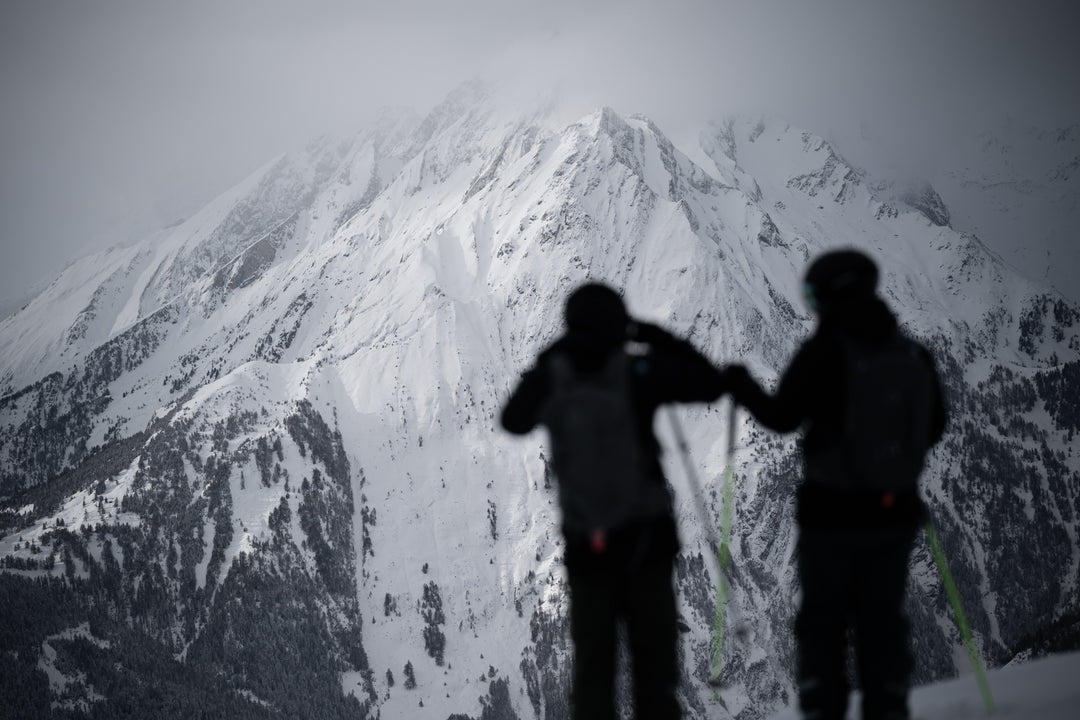In this chapter you will learn...
...to distinguish between different types of avalanches
...which factors favor an avalanche
...what avalanche problems and hazard patterns there are
...how to read the avalanche report correctly.
If you already have a lot of knowledge, you can test it right here in the quiz.
If you would like to learn more, you will find all the important information you need to take part in the quiz in the following chapters.
For us mountain sports enthusiasts, avalanches are a powerful and relentless force of nature, fascinating but above all often deadly! While other risks are easy to assess, the danger of avalanches often remains unpredictable. It is therefore of immense importance to deal with the basics and effective risk management in this area.
The ability to recognize dangers forms the basis for their appropriate assessment. A deeper understanding of the interrelationships in turn enables a more precise assessment of the risk. The topic of avalanches presents us with the challenge of learning to deal with uncertain knowledge and still make smart decisions.
The following pages will give you an initial overview of the basics of avalanche knowledge. However, we recommend that you attend an avalanche course. You can find many courses at our partner Alpinwerkstatt, for example.
Types of avalanches
Slab avalanche
Slab avalanches typically have a wide, linear trailing edge that suddenly releases and slides at high speed on a smooth layer of snow.
98% of all avalanche victims die in slab avalanches.
REQUIREMENTS
- Requires a slope of at least 30° to slip
- "bound snow package" (the board), which lies on a weak layer of disturbed fur
(e.g. hardened old snow cover, snow-covered surface frost) - Triggering spontaneously or through additional stress (e.g. mechanical force or explosion)
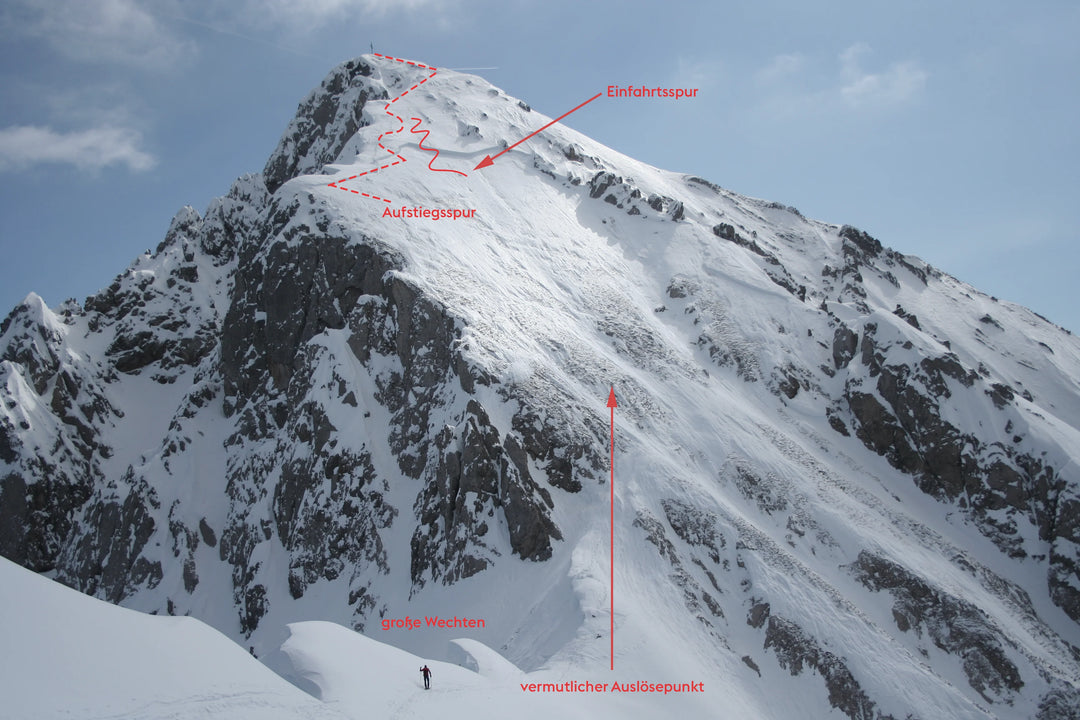
© avalanche.
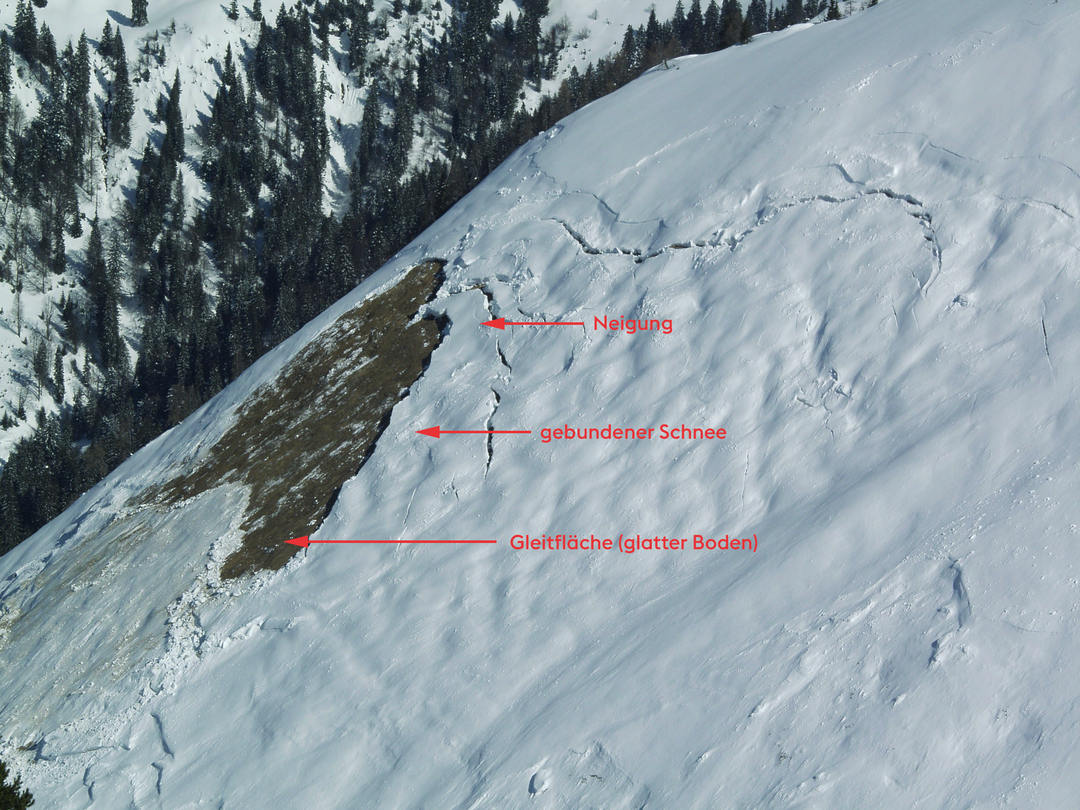
© avalanche.
Gliding snow avalanche
These can be seen primarily on steep meadow slopes with a slope of 27° or more. Sheets of snow slide on a film of water, slowly creating a gliding snow avalanche.
Typically, cracks or “snow mouths” form above the board before it slips. That's why it's important to watch out for gliding snow cracks, so-called "fishmouths". Gliding snow avalanches cannot be caused by people or by blasting. It is unpredictable if and when they will go away.
REQUIREMENT
- Smooth surface: grass or rock
- The steeper the slope, the more likely the snow is to slide
- Formation of moist snow layer: warm and/or wet ground in midwinter or meltwater and rain seeping to the ground
Wet snow avalanche
Due to moisture penetration, there is a loss of stability in the snow cover. This type of avalanche often occurs in spring. Wet snow avalanches usually occur spontaneously and are only triggered in rare cases by winter sports enthusiasts.
REQUIREMENTS
- Soaking of the snow cover by rain or melt
- High temperatures or rain
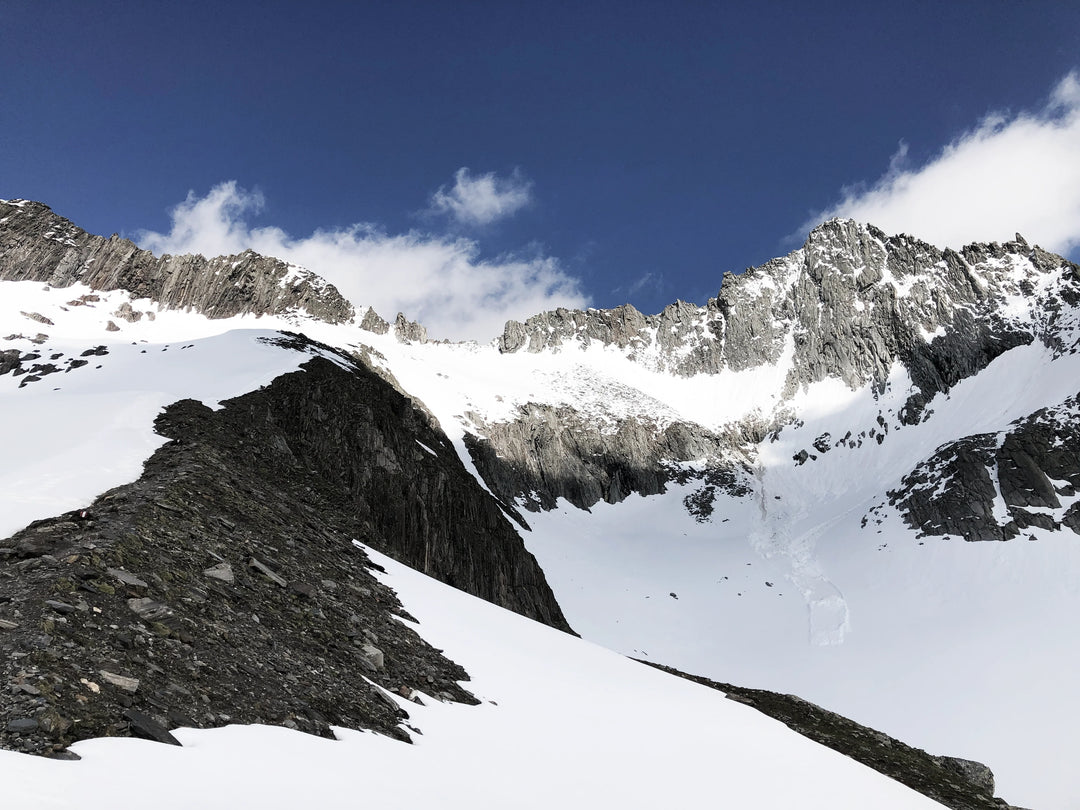
© Henriette Morgenstern
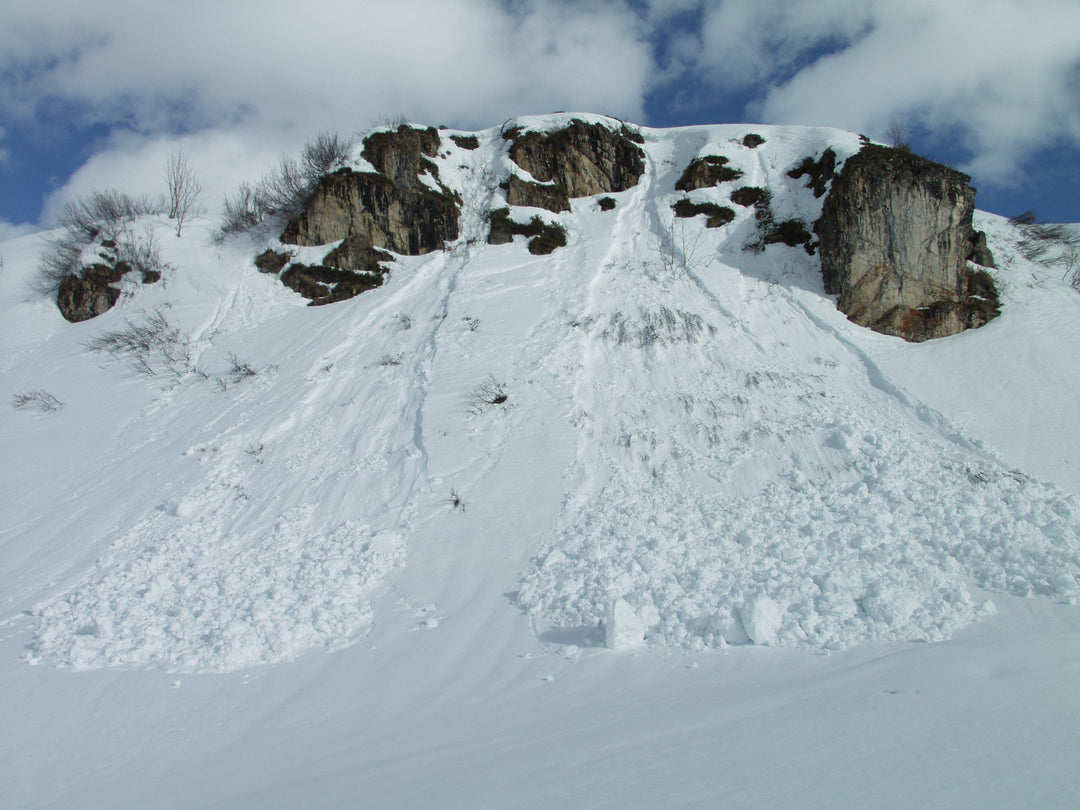
Loose snow avalanche
The loose snow avalanche
can be recognized by its punctiform crack and its pear-shaped avalanche cone. As the snow masses slide, they become wider and faster. Loose snow avalanches
are responsible for 1% of avalanche victims. Avalanches of this type are caused by winter sports enthusiasts or other forces that cause the snow to move.
REQUIREMENT
- Slope inclination more than 35°
- Often after a thaw or exposure to sunlight
- An unbound layer of fresh snow or a moist blanket of snow as a warning sign
Dust avalanche
Dust avalanches are dry avalanches that fall down steep rocky cliffs. The snow masses accelerate during free fall and mix with the surrounding air. These avalanches mainly occur in very high mountains where there are low temperatures and large rocky outcroppings, such as in the Himalayas.
The danger for winter sports enthusiasts is that they will suffocate by inhaling the snow dust.
REQUIREMENTS
- Major or very major avalanche danger
- Dust cloud due to high fall height and amount of snow mixed with air
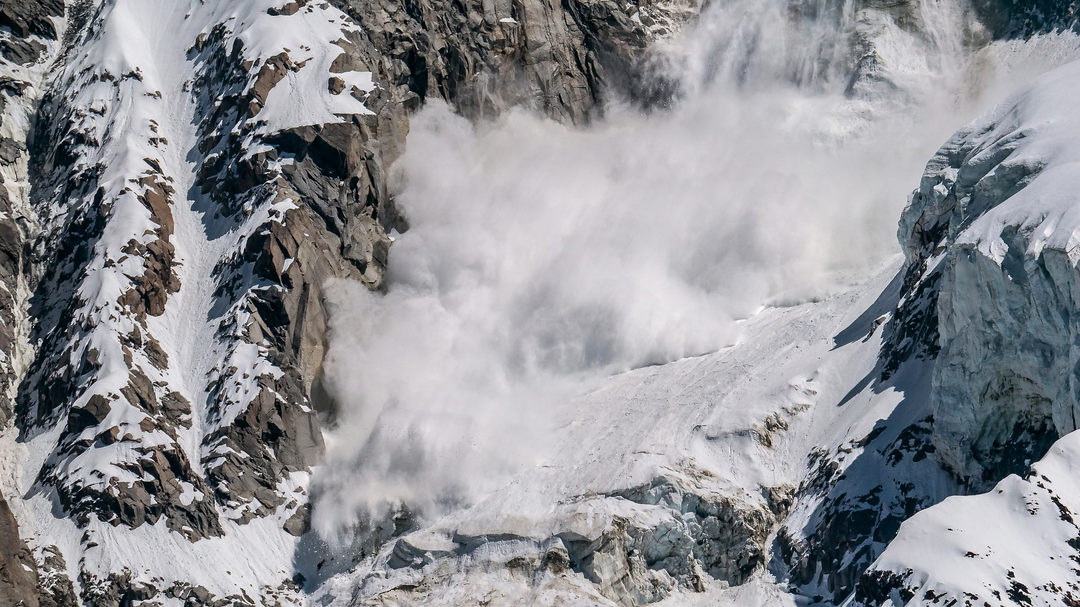
AVALANCHE FACTORS
Avalanches are caused by the interaction of various influencing factors, the decisive elements being the weather and the nature of the snowpack, the terrain and human behavior.
Conditions
The snow cover is influenced by the weather, i.e. wind, temperature, solar radiation and precipitation. “Conditions” refers to the interaction of the factors “weather” and “snow cover”.
terrain
The terrain contributes to the assessment of avalanche risk in two ways. On the one hand, there are topographical conditions that favor the formation of slab avalanches. On the other hand, the terrain often acts as so-called terrain traps.
Person
In most cases, an avalanche burial is not accidental. Spontaneous avalanches are only responsible for just under five percent of burials. Your own behavior and the behavior of those accompanying you have a significant influence on the risk.


